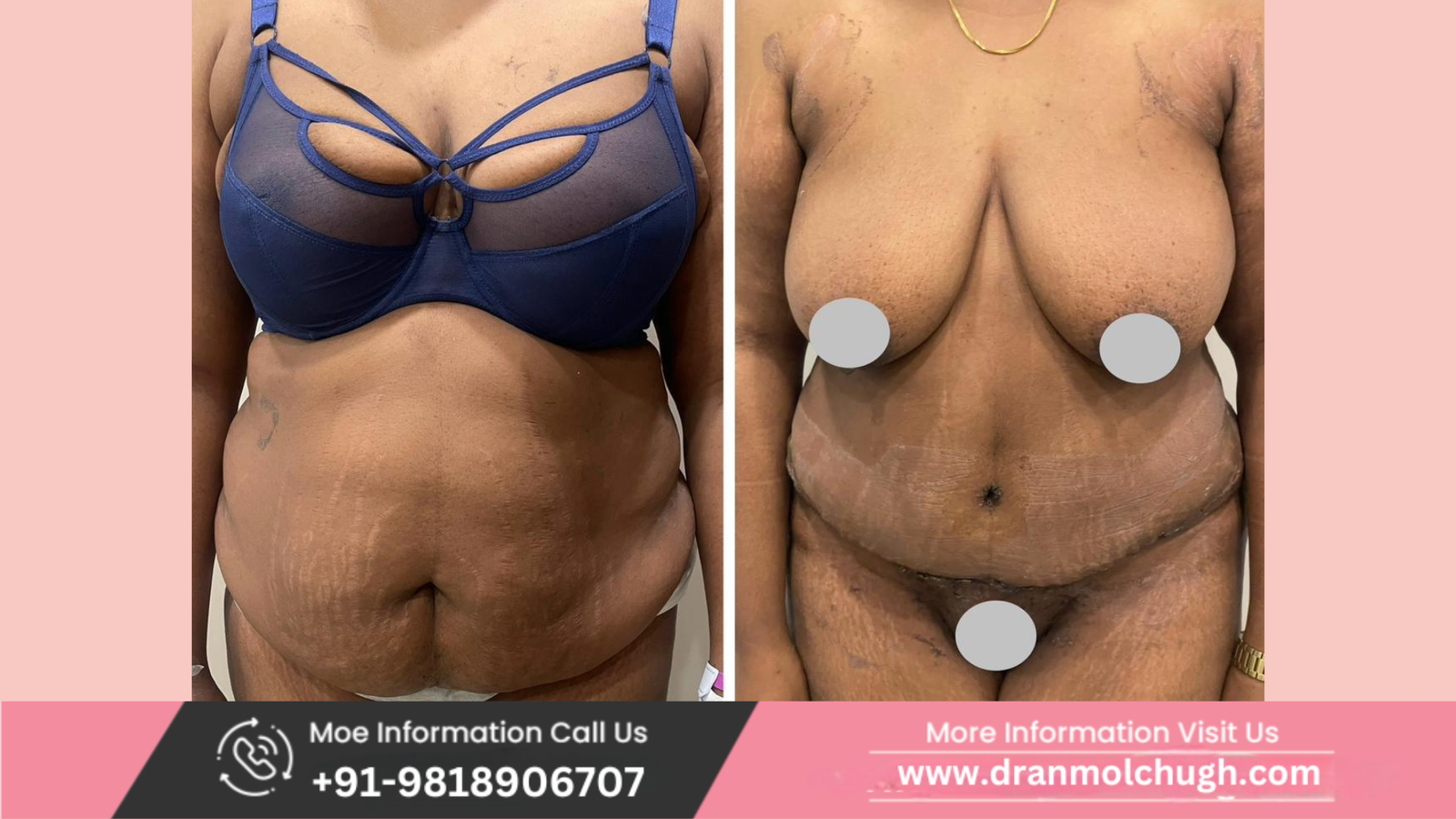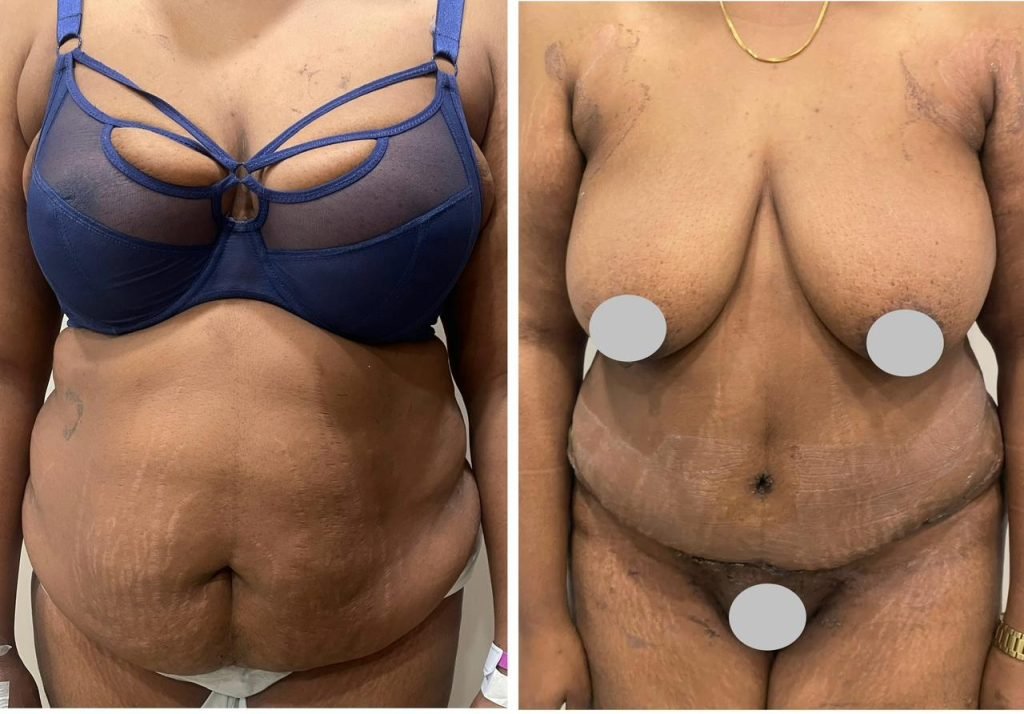
Case Study: Tummy Tuck Transformation in a High BMI Patient (50-Year-Old Female)
Patient Profile
- Age: 50 years
- Concern: Excess abdominal skin and fat due to weight fluctuations and aging.
- BMI: High (Obese category)
Challenges:
- Increased surgical risks due to a higher BMI, requiring meticulous planning.
- Significant abdominal skin laxity and stubborn fat deposits resistant to diet and exercise.
- Weak abdominal muscles (diastasis recti), contributing to a bulging abdomen.
- Higher risk of wound healing issues, demanding a specialized post-op care strategy.
The Surgical Challenge
Performing a tummy tuck (abdominoplasty) on a high BMI patient presents unique complexities. Unlike standard cases, excess subcutaneous fat can impact wound healing, circulation, and overall surgical safety. This required:
Preoperative Optimization:
- The patient was placed on a pre-surgery weight management plan to minimize risks.
- A low-inflammatory diet and increased activity were encouraged for 4-6 weeks prior to surgery.
Custom Surgical Plan:
- Extended tummy tuck incision to address excess skin.
- Liposuction-assisted contouring to improve overall definition and reduce fat bulk.
- Abdominal muscle repair (rectus plication) to restore core strength.
Surgical Plan & Execution
1. Preoperative Planning:
– Detailed body contour mapping to ensure optimal incision placement.
– Evaluation of skin and fat distribution to balance safety and aesthetic results.
2. Surgical Procedure:
– Liposuction was performed first to reduce overall fat volume and improve skin mobility.
– Abdominoplasty with extended incision allowed removal of excessive loose skin.
– Muscle repair (diastasis recti correction) to strengthen the core and flatten the abdomen.
3. Postoperative Strategies for a High BMI Patient:
– Close monitoring for wound healing and fluid retention (higher risk in high BMI patients).
– Compression garments were used to reduce swelling and aid skin retraction.
– Early ambulation was encouraged to minimize clotting risks and improve circulation.
Postoperative Results & Transformation
Before Surgery:
- Large abdominal apron (pannus) causing discomfort and hygiene issues.
- Protruding abdomen due to weakened muscles.
- Difficulty in wearing fitted clothing and low confidence in body shape.
After Surgery:
- Dramatic abdominal contouring despite a high BMI.
- Significant reduction in bulk, making everyday movement easier.
- Flatter, more proportionate abdomen with a stronger core.
- Lower scar placement, allowing for better concealment under clothing.
See the transformation images below for visual comparison.

Recovery & Functional Improvement
- First 2 Weeks: Initial swelling and bruising managed with compression garments and lymphatic massage.
- By 6 Weeks: The patient experienced a significant reduction in abdominal discomfort, with noticeable improvements in posture and mobility.
- At 3 Months: The final shape became more defined, with increased confidence and ease in daily activities.
ALSO READ: CASE STUDY: TUMMY TUCK HIGH–DEFINITION FEMALE LIPOSUCTION
Key Takeaways
✅ The tummy tuck is effective in high BMI patients when performed with proper planning and safety measures.
✅ Liposuction and muscle repair help improve both aesthetic and functional outcomes.
✅ Post-op care plays a crucial role in minimizing complications and ensuring a smooth recovery.
✅ The patient regained confidence, comfort, and a more balanced body contour.
A tummy tuck can be life-changing—even for those with a higher BMI. If you’re considering a transformation like this, schedule a consultation with Dr. Anmol Chugh today!